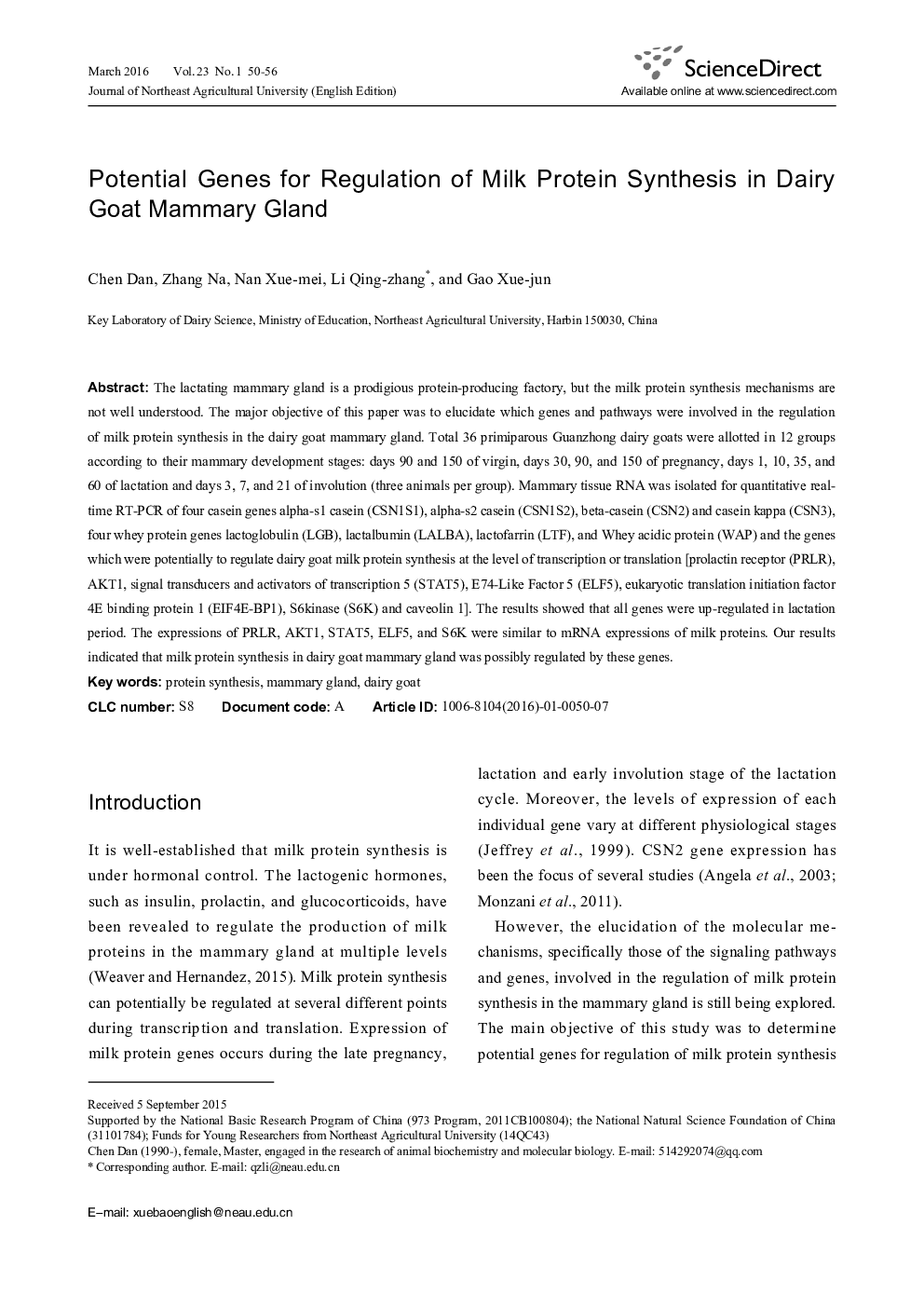| Article ID | Journal | Published Year | Pages | File Type |
|---|---|---|---|---|
| 4495281 | Journal of Northeast Agricultural University (English Edition) | 2016 | 7 Pages |
The lactating mammary gland is a prodigious protein-producing factory, but the milk protein synthesis mechanisms are not well understood. The major objective of this paper was to elucidate which genes and pathways were involved in the regulation of milk protein synthesis in the dairy goat mammary gland. Total 36 primiparous Guanzhong dairy goats were allotted in 12 groups according to their mammary development stages: days 90 and 150 of virgin, days 30, 90, and 150 of pregnancy, days 1, 10, 35, and 60 of lactation and days 3, 7, and 21 of involution (three animals per group). Mammary tissue RNA was isolated for quantitative real-time RT-PCR of four casein genes alpha-s1 casein (CSN1S1), alpha-s2 casein (CSN1S2), beta-casein (CSN2) and casein kappa (CSN3), four whey protein genes lactoglobulin (LGB), lactalbumin (LALBA), lactofarrin (LTF), and Whey acidic protein (WAP) and the genes which were potentially to regulate dairy goat milk protein synthesis at the level of transcription or translation [prolactin receptor (PRLR), AKT1, signal transducers and activators of transcription 5 (STAT5), E74-Like Factor 5 (ELF5), eukaryotic translation initiation factor 4E binding protein 1 (EIF4E-BP1), S6kinase (S6K) and caveolin 1]. The results showed that all genes were up-regulated in lactation period. The expressions of PRLR, AKT1, STAT5, ELF5, and S6K were similar to mRNA expressions of milk proteins. Our results indicated that milk protein synthesis in dairy goat mammary gland was possibly regulated by these genes.
